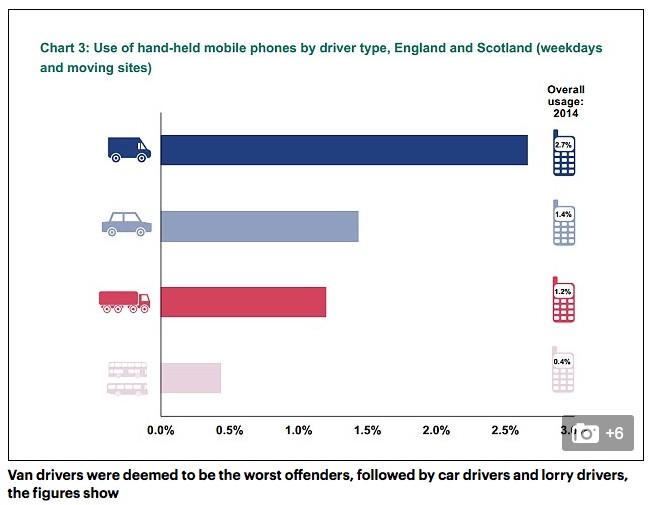|
There is currently much discussion about autonomous vehicles and the impact that they will have on our streets. Some anticipate that they will make private cars, buses and taxis virtually obsolete by 2030. Others are more sceptical. But we do not need to look 15 years into the future to anticipate significant changes in how roads are used; they are already evident. For example, van traffic in the UK has increased by 70% in the past 20 years and is currently growing at 4 % a year. This is likely to be due in part at least, to the ever increasing rise in internet shopping and home delivery. What are the implications for our streets? Without wishing to jump to “white van man” stereotypes, it is hard to avoid concluding that there are a number of negative impacts on streets and their users. A 2015 study by TRL found van drivers to be twice as likely as other drivers to use phones while driving. Anecdotally, vans seem particularly prone to illegal parking/loading, pavement parking and poor driving standards generally, encouraged no doubt by the employment and productivity pressures which apply to many van drivers. This can only have a negative impact on pedestrians, cyclists and indeed other drivers. The rise of Uber is another recent change in traffic patterns, which is certainly disrupting traditional taxi businesses in urban areas and has led to calls for more regulation. But it is not only motor vehicle patterns which are changing; on a recent 20 minute walk I made through Edinburgh in the early evening, I passed 6 cyclists - five of which were Deliveroo couriers, whose road behaviour has also been subject to criticism. Deliveroo started operations only in 2013. Companies generating new traffic like Amazon, Asos, Uber, Deliveroo, etc have business models built on the free use of a public asset: the road. Of course, we love home delivery of shopping and take-away food, and low ‘taxi’ fares. But it raises the question of whether commercial road users should pay more for using assets that they currently use for free - especially if their behaviour puts a cost (in terms of safety, convenience and accessibility) on other road users. The current taxation regime (for fuel, VED etc) is a very blunt instrument for making road users pay a fair price for using roads. In the longer term, ‘smart’ road pricing may become more acceptable as a means to apportion charges on road users more fairly, on top of the growing need to curtail urban traffic because of congestion and air quality. Indeed just this month the London Assembly has called for urgent reform to the capital's Congestion Charge. As so often, the technology is there, but the legal and regulatory environment lags behind.
1 Comment
|
“I hate the way everyone responsible for urban life seems to have lost sight of what cities are for. They are for people” Bill Bryson, Neither here Nor there, 1991 p61 Archives
November 2022
Categories |
|
|




 RSS Feed
RSS Feed
